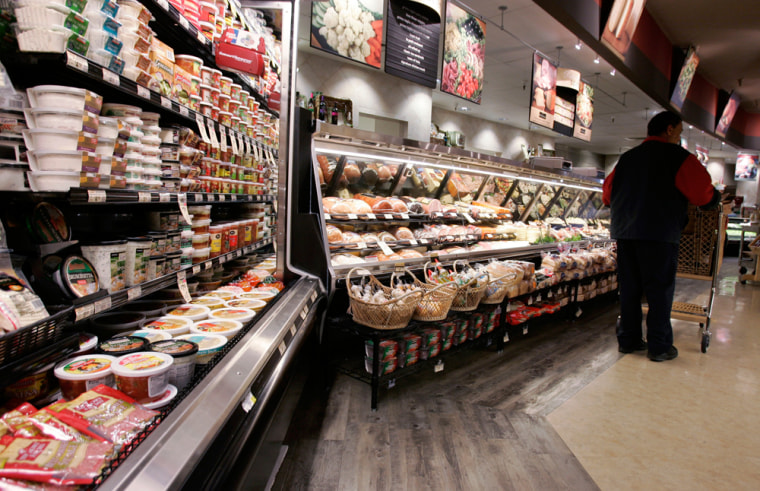Nothing shouts summer louder than a picnic. What is more lazily carefree than a recumbent smorgasbord in a pretty outdoor spot? Given the vast array of prepared foods available these days, roadside picnics are easier than ever, requiring nothing more than a walk down a grocery aisle before heading down the road. With a little more advance planning, however, you'll never have to slice cheese with your credit card, rip off hunks of French bread with your teeth, or sit on a piece of old newspaper in a vain attempt to keep your slacks clean.
In previous articles, I've provided some tips and suggestions for creating an everyday "Road-Trip Go-Kit" and a "Pets Go-Kit." In honor of the al fresco season, here is my "Picnic Go-Kit."
First, purchase a large plastic container with a sealable lid to hold your picnic equipment and keep it clean. Store it where you can grab it at a moment's notice, or keep it in your car's trunk if you have room. Pack it with the following essentials and you'll be ready to sneak away for an impromptu picnic.
Prep and cleanup supplies
- Cutting board and two sharp knives (a serrated knife for bread and a paring knife for vegetables and other foods)
- Eating and serving utensils
- Can opener and corkscrew
- Seasonings and sweeteners
- Napkins and paper towels
- Zip-top plastic bags
- Trash bags
- Cleaning wipes
- Tea towels (2 or 3)
- Hand sanitizer
Other essentials
- Tablecloth and blanket
- Plastic tarp
- A dozen half-liter bottles of water
- A good book and/or deck of cards (to wait out a summer storm)
- Repair kit (duct tape, sewing kit, small pocket knife)
- Matches
- Flashlight
- Insect repellant and sunscreen
- Bathing suit
- Frisbee or a ball and glove
In addition to the container for supplies, I suggest acquiring two coolers, one for food and one for beverages. For food safety, be sure to keep a refrigerator thermometer in the food cooler.
Tips for packing coolers
Beverage coolers tend be opened frequently. By keeping perishable food in a separate cooler, you will keep it fresher longer. For food coolers, I prefer to use those refreezable "blue-ice" blocks instead of ice. Not only do they stay colder longer, they don't get everything in the cooler wet as they thaw. Ice is fine for beverage coolers, however, and it's easy to "top them up" when you're on the road. I recommend washing fruits and vegetables before you leave home. Pack all foods in airtight bags or sealed plastic containers. This helps prevent cross contamination, not to mention a mess. Food in a cooler should always be kept at 40 degrees or colder. Here are some guidelines for safely storing food in a cooler.
When packing a cooler, make sure to pack it full. A full cooler warms up much more slowly than one that is half empty. Be sure to place the refrigerator thermometer at the top of the cooler, where the warmer air collects; if the temperature is below 40 degrees at the top, it's safe to assume that the rest of the food is being stored safely. I usually put sturdier fruit on the bottom of the cooler and then layer wrapped sandwiches or other food on top. Here are some ideas for good road and picnic food.
Technology has revolutionized picnic coolers in the last 20 years, and professional truck drivers have been at the forefront of popularizing small, highly efficient, 12-volt coolers that plug into a vehicle's electrical system. These have the obvious advantage of not requiring ice. To see what is available, I suggest a field trip to your nearest full-service truck stop. During a recent visit, I was amazed to see the variety of portable mini-refrigerators that are available these days. Here is some more information about the types of more traditional coolers that are available.
When you reach the picnic spot
I almost never sit down on the ground for a picnic — I tend to be a tailgating sort of guy. But if you have kids or you like to sit on the ground, here are some tips:
- Put a waterproof tarp under the picnic blanket or tablecloth. It helps keep everything dry and also helps insulate the picnic blanket from the heat or cold of the ground.
- Pick your picnic spot carefully. Check for ants, bees and wasps. If mosquitoes are likely to be a problem, choose a higher, drier spot that is in full sun and exposed to a breeze. Mosquitoes have trouble in the wind and they avoid sunny locations.
- Consider taking a couple of folding camp stools or chairs. They are much more comfortable than picnic benches for all us old-timers.
OK, you have your "Picnic Go-Kit" ready to go. What's the next step? Stop reading and get on out there! Wherever you may be, chances are excellent that there's a nice picnic spot less than half an hour away.
